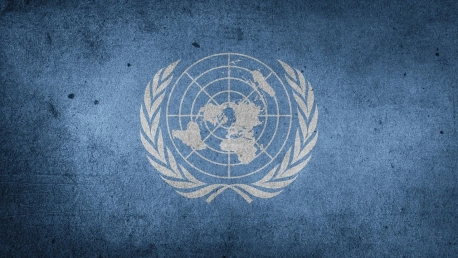Efforts to establish a UN Cybercrime Treaty have catalyzed a significant global discussion on how to effectively address cybersecurity while respecting human rights. This treaty seeks to offer a cohesive strategy to counter cyber threats, yet faces the challenge of aligning international security needs with the protection of individual freedoms. Achieving this balance is crucial; the treaty aims not only to enhance collective security measures but also to ensure that these do not infringe upon fundamental human rights. This dual objective presents a complex diplomatic task, as it requires the treaty to be flexible enough to respond to various nations’ needs for safety and also to be steadfast in maintaining human rights standards. As the world becomes increasingly interconnected digitally, the importance of such a comprehensive framework grows, displaying the urgent need for countries to collaborate on this dual-front battle against cybercrime – deterring illegal activities in the digital realm while safeguarding the rights enshrined for every global citizen.
The Path to a Global Cybercrime Framework
Propelled by the acknowledgment that cybercrime knows no borders, efforts to craft an international legal framework have gained momentum. The pursuit of a comprehensive treaty is spurred by the reality that the digital realm has become a fertile ground for a plethora of criminal activities, with the laws of individual states often falling short in addressing the complexity and global nature of these crimes.
A Brief History of Cybercrime Legislation
The Budapest Convention set key guidelines for international cooperation against cybercrime, yet failed to achieve global consensus, emphasizing the gap between diverse legal frameworks and cultural viewpoints. Recognizing the limitations in its universal appeal, there emerged a pressing need for an encompassing agreement. The United Nations stepped up to the challenge, working towards a globally accepted treaty. The aim was to craft a document that would not only advance the effectiveness of combating digital threats but also secure commitment from a wide array of nations. This pursuit is not merely about refining strategies against cybercrime, but also about forging a consensus that respects the variety of global perspectives and legal systems, thereby ensuring a unified and strong front against the escalating challenges in cyberspace. The endeavor by the UN seeks to build on the Budapest Convention’s groundwork, aiming to bridge divides and foster a widespread, cohesive approach to cybersecurity.
The Contours of the Current Draft
The proposed treaty’s comprehensive draft, encompassing a wide array of cybercrimes, is being meticulously analyzed. Despite its coverage, the draft currently lacks robust provisions for human rights, which has become a contentious point as negotiations are on the horizon. Advocates for human rights are increasingly vocal about the need for explicit protections within the treaty’s language. As these discussions approach, the success of the treaty in garnering a broad consensus hinges on its ability to balance effectively the principles of justice and individual freedoms. The upcoming talks are poised to be influenced by how well the final version of the treaty can reconcile these crucial concerns pertaining to rights and liberties, and thus set a precedent for international cooperation that honors both legal governance and human rights.
Balancing Act: Security Needs vs. Human Rights
Treaty drafters are operating on a tightrope, striving to provide a tool potent enough to fight cybercrime while ensuring it cannot be co-opted as an instrument of repression. The challenge lies in crafting language that unequivocally protects freedoms while establishing robust mechanisms to counteract cyber threats.
Addressing the Human Rights Concerns
The current language of the pivotal treaty has raised serious concerns over potential abuses, such as excessive government surveillance and unregulated data gathering. These worries have sparked a significant reaction encompassing both powerful industry players and vocal civil liberties groups. There’s a consensus among these stakeholders that the treaty’s effectiveness hinges on its ability to articulate cybercrime explicitly while also bolstering human rights protections.The outcry underscores the delicate balance between combating digital crimes and safeguarding individual freedoms. Advocates insist that without clear definitions and boundaries, the treaty could inadvertently grant excessive powers, leading to privacy infringements and a slippery slope toward authoritarian oversight.In response to these concerns, a collaborative push is advocating for a treaty framework that is not only robust in its fight against cybercrime but also unassailable in its commitment to upholding human rights. The stakeholders are calling for careful wording that does not leave room for over-interpretation or misuse by state actors.Their unified voice reflects the growing awareness of the importance of privacy in the digital age and the foundational role it plays in a healthy, functioning democracy. As negotiations continue, these advocates are determined to ensure that the treaty will be a tool for justice and security without compromising the rights and freedoms that are essential in the digital sphere.
The Role of Civil Society and Industry
In the digital arena, where cyber threats loom large, key players like Microsoft and the CyberPeace Institute are proactively shaping the trajectory of a pivotal cybersecurity treaty. Their involvement signals the critical nexus between practical cybersecurity strategies and the upholding of human rights principles. These organizations champion a treaty that navigates the balance between ensuring security and upholding the freedom and rights of individuals.Their activism is not in isolation but echoes a wider call for a regulatory framework that firmly safeguards against cyber threats while simultaneously protecting fundamental liberties. It’s a demanding task, considering the complex interplay between national security, individual privacy, and the fluid nature of cyber operations.The collective voice of this advocacy aims to influence policymakers to consider a holistic approach that addresses both security needs and the importance of human rights. The active participation of these major entities in the treaty’s formation underlines the treaty’s significance in shaping a secure yet free digital future for all. This discourse is a testament to the evolving understanding that effective cyber governance calls for a partnership that includes both global organizations and committed institutions that stand at the intersection of technology and human rights.
Possible Outcomes and Their Implications
The shape the treaty will take remains fluid, and the discourse is rife with speculation. The extent of the treaty’s impact will hinge on the coming months’ negotiations, where the myriad intentions of UN member states will collide or coalesce in fashioning a unified front against cybercrime.
Scenarios on the Negotiation Table
In the high-stakes realm of cybersecurity negotiations, various strategies could unfold. One potential path is a cooperative one where parties agree to revisit their plans, striving to hammer out a mutually beneficial strategy. This approach underscores the possibility of creating a harmonious framework that could enhance international cyber norms and stability.Alternatively, there might be an inclination to employ delaying tactics, with participants leveraging political maneuvers to buy time or shift the balance of power. Such tactics can reflect the intricate dance of diplomatic chess, as countries strive to position themselves advantageously without committing to immediate action.The third scenario involves a more decisive push toward calling for a vote in the General Assembly. This route can precipitate rapid developments, catalyzing the creation of binding resolutions that aim to shape the cyber landscape. However, this could also polarize member states and potentially rush decisions without the thorough consensus-building that complex cybersecurity issues often require.Each pathway carries implications not just for cybersecurity policy but also for the broader tapestry of global politicking, reflecting the intricate interplay between national interests and collective security. The chosen direction will likely have reverberating effects, shaping the international order’s approach to the digital frontier and the norms dictating state behavior in the cyber realm.
Integrating a Multifaceted International Voice
The negotiations around a global cybercrime treaty are enriched by the variety of perspectives brought to the table from around the world. These discussions highlight the complexity of aligning different legal frameworks and protecting human rights across borders. Crafting a treaty that successfully addresses the nuances of cybercrime while also upholding human rights principles is no small feat. The ability of the treaty drafters to acknowledge and integrate these distinct points of view without compromising the treaty’s fundamental goals is crucial.The task at hand for negotiators is to find common ground amid these divergent opinions. This means painstakingly working through each country’s approach to cybercrime and discovering a way to ensure that the enforcement mechanisms proposed do not infringe on individual freedoms. The end goal is to create a document that is not only effective but also just and equitable. The final treaty text will serve as a tribute to the diplomatic skill and dedication of the negotiators, reflecting their commitment to resolving the tensions between these two important objectives. Such a document has the potential to stand as a landmark achievement, harmonizing international efforts against cybercrime with a consensus-based approach that respects and protects the rights of all individuals.
The Road Ahead for the Cybercrime Treaty
As the UN prepares for what could be a significant stride forward, the international community watches with a mingled sense of caution and optimism. The crafting of a treaty that could set the tone for the digital age’s legal landscape is underway, and its repercussions will resonate globally, shaping cyberspace’s governance for years to come.
Crafting a Treaty for a United Global Stance
In crafting a treaty to combat cybercrime, the roles of negotiators from various sectors are crucial. These individuals represent diverse interests from industry and civil society, offering a wide range of perspectives and expertise. Their efforts are vital in bridging the gap between ethical considerations and the practicalities of law enforcement. As these negotiators collaborate, they have the power to steer the direction of the treaty. Their challenge is to integrate universal ethical principles with enforceable legal procedures. Achieving this balance is necessary to ensure that the treaty is not only morally grounded but also effective in practical application.Their work goes beyond mere legal stipulations; it’s about creating a foundation for international cooperation. A well-negotiated treaty can set a global standard, promoting a unified front against the threats posed by cybercriminals. This kind of collaboration is essential in an era where digital crime knows no borders, and combating it requires concerted efforts from all stakeholders.Negotiators must deliberate and advocate for provisions that reflect a consensus on what constitutes just and effective action against cybercrime. The optimal outcome is a treaty that resonates with a wide array of international partners, offering a cohesive strategy against cyber threats. This would not only facilitate legal action when crimes occur but also deter potential criminal activities by establishing clear international norms and consequences.
Ensuring Effective Action Without Overreach
The global conversation is grappling with a critical balancing act: how to enhance law enforcement capabilities to combat cybercrime without tipping the scales toward potential authoritarian abuse. This intricate negotiation is taking center stage as policymakers and experts seek a framework that is both powerful and protective of fundamental freedoms. All eyes are now on how this treaty will strike a balance that is effective in the fight against digital threats, yet staunchly upholds the ideals of freedom and justice. The challenge lies in finding common ground where nations can collectively stand firm against cybercrime, ensuring that the pursuit of security does not erode the liberties that form the bedrock of democratic societies. The world waits in anticipation of a resolution that will navigate these complex waters, aiming for a solution that preserves both national security and personal freedoms.









